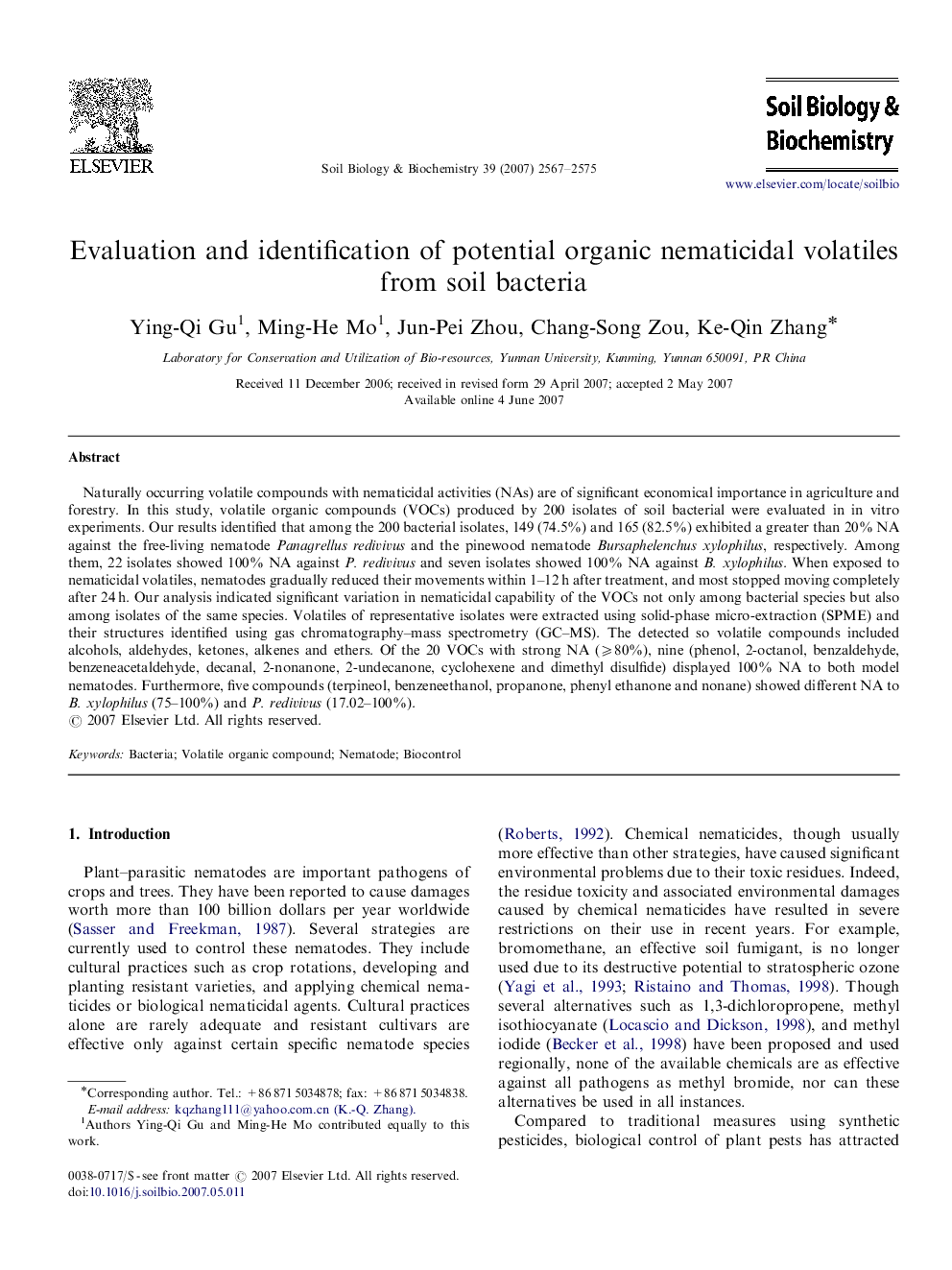| Article ID | Journal | Published Year | Pages | File Type |
|---|---|---|---|---|
| 2025920 | Soil Biology and Biochemistry | 2007 | 9 Pages |
Naturally occurring volatile compounds with nematicidal activities (NAs) are of significant economical importance in agriculture and forestry. In this study, volatile organic compounds (VOCs) produced by 200 isolates of soil bacterial were evaluated in in vitro experiments. Our results identified that among the 200 bacterial isolates, 149 (74.5%) and 165 (82.5%) exhibited a greater than 20% NA against the free-living nematode Panagrellus redivivus and the pinewood nematode Bursaphelenchus xylophilus, respectively. Among them, 22 isolates showed 100% NA against P. redivivus and seven isolates showed 100% NA against B. xylophilus. When exposed to nematicidal volatiles, nematodes gradually reduced their movements within 1–12 h after treatment, and most stopped moving completely after 24 h. Our analysis indicated significant variation in nematicidal capability of the VOCs not only among bacterial species but also among isolates of the same species. Volatiles of representative isolates were extracted using solid-phase micro-extraction (SPME) and their structures identified using gas chromatography–mass spectrometry (GC–MS). The detected so volatile compounds included alcohols, aldehydes, ketones, alkenes and ethers. Of the 20 VOCs with strong NA (⩾80%), nine (phenol, 2-octanol, benzaldehyde, benzeneacetaldehyde, decanal, 2-nonanone, 2-undecanone, cyclohexene and dimethyl disulfide) displayed 100% NA to both model nematodes. Furthermore, five compounds (terpineol, benzeneethanol, propanone, phenyl ethanone and nonane) showed different NA to B. xylophilus (75–100%) and P. redivivus (17.02–100%).
